History of Programming Languages

History of Programming Languages
Computer programming serves as the fundamental underpinning of the contemporary digital era in which we currently reside. Whenever an individual expresses approval for a post on a social media platform, sends an electronic letter, or establishes a reminder on their mobile device, a programming language operates covertly, exerting control and facilitating the desired actions. However, the question arises as to the origins of this phenomenon. What factors contributed to the significant expansion of this industry, ultimately establishing its dominant position in the present day? Understanding the history of programming languages holds significant importance in the context of hiring developers.
Please join us as we embark on a comprehensive exploration of the historical development of programming languages. This retrospective aims to illustrate the significant advancements in computer programming that have occurred throughout the years. This course will guide you through the evolution of programming languages, starting from early languages and complex machine code and leading to the development of sophisticated, human-readable languages that are important in driving our modern technologies.
The First Programming Language
It is worth noting that the inception of the first programming language dates back to the year 1843. Ada Lovelace is credited with devising the first machine algorithm for an early computing device, which she documented on paper due to the absence of computers in that era. The evolution of programming languages has been substantial over time, yet to comprehend the historical trajectory of programming languages, it is imperative to acknowledge their origins.
History of Programming Languages: A Timeline
Presented below is a chronological sequence outlining the historical development of programming languages. The initial programming languages employed in early computing equipment consisted of intricate machine codes that necessitated manual input. The field of computer programming has witnessed rapid development, progressing from machine codes to the creation of fully automated code that can be easily understood by humans.
1843: Ada Lovelace’s Machine Algorithm
Ada Lovelace is credited with the creation of the inaugural machine algorithm designed for Charles Babbage’s Difference Machine, which serves as a fundamental basis for the development of all subsequent programming languages.
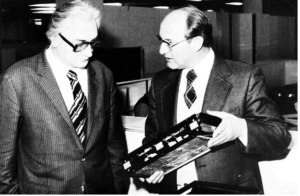
1944-45: Plankalkül
During the period of 1944-1945, Konrad Zuse made significant advancements in the field of computer programming by creating a programming language known as Plankalkül, which is considered to be the first substantial programming language. The language utilized by Zeus facilitated the development of procedures, which enabled the storage of code segments that could be repeatedly invoked to execute regular operations.
1949: Assembly Language
The Electronic Delay Storage Automatic Calculator (EDSAC) employed assembly language. Assembly language is a form of programming language that operates at a low level and serves to streamline the complexity of machine code. Put simply, the explicit guidelines required to effectively use a computer.
1949:Shortcode
The initial proposal for a High-Level Language (HLL) known as Shortcode, or Short-order code, was put up by John McCauley in the year 1949. Nevertheless, it was William Schmitt who successfully executed its implementation for the BINAC computer in the same year and subsequently for the UNIVAC in 1950.
1952: Autocode
The phrase “Autocode” encompassed a range of programming languages that were widely utilized. Autocode, initially conceived by AlickGlennie for the Mark 1 computer at the University of Manchester, holds the distinction of being the pioneering compiled language. This characteristic enables Autocode to undergo direct translation into machine code through the utilization of compiler software. The utilization of Autocode was observed on the Ferranti Pegasus and Sirius early computer machines alongside the Mark 1.
1957: FORTRAN
The computer language known as FORmulaTRANslation or FORTRAN was developed by John Backus and is widely recognized as the most ancient programming language now in active use. The programming language was specifically developed to facilitate high-level scientific, mathematical, and statistical computations. FORTRAN continues to be utilized in contemporary times within a subset of the globe’s most cutting-edge supercomputing systems.
1958: ALGOL (Algorithmic Language)
The programming language known as Algorithmic Language, or ALGOL, was developed collaboratively by a council of computer scientists from both American and European backgrounds. ALGOL had a pivotal role in the genesis of several significant programming languages, such as Pascal, C, C++, and Java.
1958: LISP (List Processor)
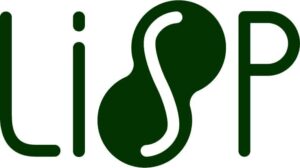
The List Processor, also known as LISP, was developed by John McCarthy at the Massachusetts Institute of Technology (MIT). Originally designed for artificial intelligence applications, LISP stands as one of the most enduring programming languages that continues to be utilized in contemporary contexts. It can serve as a viable alternative to Ruby or Python. Companies such as Acceleration, Boeing, and Genworks continue to include LISP within their technological frameworks.
1959: COBOL (Common Business Oriented Language)
Common Business Oriented Language (COBOL) serves as the programming language utilized in various critical systems, including credit card processors, ATMs, telephone and mobile calls, hospital signals, and traffic signaling systems, among others. The language’s development was spearheaded by Dr. Grace Murray Hopper with the intention of ensuring compatibility across various computer brands and models. The programming language COBOL continues to be utilized in contemporary times, predominantly within the domains of banking and gamification systems.
1964: BASIC (Beginner’s All-Purpose Symbolic Instruction Code)
The programming language known as Beginners All-Purpose Symbolic Instruction Code (BASIC) was created by a collective of students affiliated with Dartmouth College. The language was designed to cater to students with limited knowledge of mathematics or computer science. The language underwent additional development under the guidance of Bill Gates and Paul Allen, founders of Microsoft, ultimately becoming the company’s first commercially viable product.
1970: PASCAL
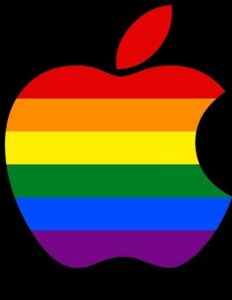
The programming language was developed by Niklaus Wirth in homage to the renowned French mathematician Blaise Pascal. The tool was designed with the intention of facilitating computer programming education, hence ensuring its user-friendliness and ease of acquisition. During the initial stages of Apple’s development, this particular technology was highly preferred due to its exceptional user-friendliness and impressive capabilities.
1972: Smalltalk
Smalltalk, a programming language, was created by Alan Kay, Adele Goldberg, and Dan Ingalls at the Xerox Palo Alto Research Centre. It facilitated the ability of computer programmers to make real-time modifications to code. The paper discussed some programming language features that are prevalent in contemporary languages, including Python, Java, and Ruby. Leafly, Logitech, and CrowdStrike have indicated that they incorporate Smalltalk inside their technological frameworks.
1972: C
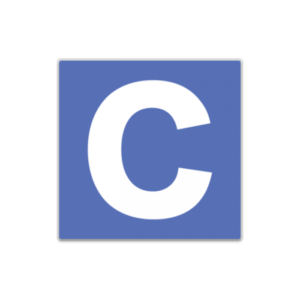
The programming language known as C was created by Dennis Ritchie at the Bell Telephone Laboratories specifically for implementation within the Unix operating system. The programming language known as C derived its name from its predecessor, a language referred to as ‘B.’ Several prominent programming languages, such as C#, Java, JavaScript, Perl, PHP, and Python, are derived from the C programming language. Furthermore, prominent corporations such as Google, Facebook, and Apple have also employed and continue to utilize this technology.
1972: SQL (SEQUEL at the time)
The initial development of SQL can be attributed to the efforts of IBM researchers Raymond Boyce and Donald Chamberlain. The term “SEQUEL” (as it was commonly known before its inception) is employed to facilitate the retrieval and manipulation of data stored within databases. In contemporary times, the predominant language utilized for managing relational databases is SQL, an abbreviation for Structured Query Language. Numerous firms, such as Microsoft and Accenture, employ SQL as a fundamental component of their operations.
1980/81: Ada

The Ada programming language was initially developed by a team led by Jean Ichbiah of CUU Honeywell Bull as part of a contract with the United States Department of Defense. The programming language known as Ada is derived from the name of Ada Lovelace, a prominent mathematician of the mid-19th century. Ada is characterized by its structured nature, static typing, imperative paradigm, wide range of applicability, and support for object-oriented programming principles. Ada was derived from existing programming languages, including Pascal, which were widely used during that period. Ada programming language is employed in the development of air traffic control systems in various countries, including Australia, Belgium, and Germany, alongside numerous other transportation and space-related initiatives.
1983: C++
Bjarne Stroustrup made modifications to the C programming language while working at Bell Labs, resulting in the development of C++. C++ is an extended version of C that incorporates additional features like classes, virtual functions, and templates. Since 1986, the programming language in question has consistently been ranked in the top 10 programming languages. In recognition of its enduring significance, it was granted Hall of Fame status in the year 2003. C++ finds applications in many high-performance software such as MS Office, Adobe Photoshop, game engines, and similar programs.
1983: Objective-C
![]()
Objective-C, a programming language primarily utilized for software development on Apple’s macOS and iOS operating systems, was created by Brad Cox and Tom Love.
1987: Perl
The programming language Perl was developed by Larry Wall and is classified as a general-purpose, high-level programming language. Originally, the programming language in question was developed with the intention of serving as a scripting language specifically tailored for text editing purposes. However, in contemporary times, it has gained significant traction and is now extensively employed across a diverse range of applications, including but not limited to CGI, database applications, system administration, network programming, and visual programming.
1990: Haskell
The programming language Haskell derives its name from Haskell Brooks Curry, a prominent American logician and mathematician, and is widely recognized as a versatile tool for various computational tasks. The programming language in question is classified as a purely functional language, indicating its predominant reliance on mathematical principles. It is utilized in various sectors, notably those involved in intricate computations, data management, and quantitative analysis. Similar to numerous programming languages of its time, the utilization of Haskell in prominent applications is not particularly prevalent. Having previously mentioned, the programming language has been utilized in the creation of various games, including one titled “Nikki and the Robots.”
1991: Python
Python, the programming language, derives its name from the renowned British comedy ensemble ‘Monty Python’. Its creation can be attributed to Guido Van Rossum. The programming language in question is a versatile and advanced tool designed to accommodate many programming methodologies while still providing an enjoyable user experience. Notably, many tutorials, examples, and instructions associated with this language have references to Monty Python. Python continues to be widely recognized as one of the most prevalent programming languages globally, with notable adoption by prominent organizations, including Google, Yahoo, and Spotify.
To learn more about this exciting programming language to seek entry into the highly booming sector of cybersecurity, you may try Craw Security, a versatile Cybersecurity Training Institute in India, which is the parent company of News4Hackers; you can join the Python Programming Course. This course is duly affiliated with FutureSkills Prime, a MeitY – NASSCOM, Digital Skilling Initiative, and approved by the Government of India.
1991: Visual Basic
Visual Basic, a programming language developed by Microsoft, enables programmers to employ a graphical user interface (GUI) to select and modify predetermined sections of code using a drag-and-drop approach. The utilization of the language in contemporary times is rather limited, but Microsoft has included segments of Visual Basic in several of their apps, including Word, Excel, and Access.
1993: Ruby
Ruby, an interpreted high-level programming language, was developed by Yukihiro Matsumoto. The development of a teaching language was influenced by a variety of programming languages, including Perl, Ada, Lisp, and Smalltalk, among others. The principal applications of Ruby encompass the construction of web-based applications and the utilization of the Ruby on Rails framework. Twitter, Hulu, and Groupon are prominent exemplars of enterprises that employ the Ruby programming language.
1995: Java
Java is a versatile and advanced programming language that was developed by James Gosling specifically for the purpose of an interactive television project. The programming language in question exhibits cross-platform compatibility and continuously maintains a prominent position among the most widely used programming languages globally. Java is ubiquitously present in several domains, encompassing computer systems, mobile devices, and even parking meter technology.
1995: PHP
PHP, first referred to as ‘Personal Home Page’ and currently known as ‘Hypertext Preprocessor,’ was created by RasmusLerdorf. The major applications of this technology encompass the creation and upkeep of interactive web pages, with the development of server-side functionalities. PHP is utilized by prominent multinational corporations such as Facebook, Wikipedia, Digg, WordPress, and Joomla.
1995: JavaScript
JavaScript, a programming language developed by Brendan Eich, finds its primary use in the domains of dynamic web development, PDF document manipulation, web browser functionality, and desktop widget creation. JavaScript is utilized by nearly all prominent websites. Some well-known examples include Gmail, Adobe Photoshop, and Mozilla Firefox.
2000: C#
C# was created at Microsoft with the intention of amalgamating the computational capabilities of C++ with the user-friendly nature of Visual Basic. It is rooted in C++ and exhibits numerous resemblances to Java. The programming language is employed in nearly all Microsoft products and is predominantly observed in the development of desktop applications.
2003: Scala
Scala, a programming language created by Martin Odersky, integrates principles of mathematical functional programming with structured object-oriented programming. The interoperability of Scala with Java renders it advantageous for Android development. Several prominent firms, such as LinkedIn, Twitter, Foursquare, and Netflix, use Scala in their technological frameworks.
2003: Groovy
Groovy, a programming language, was created by James Strachan and Bob McWhirter as an extension of Java. The efficacy of language in enhancing productivity can be attributed to its concise nature and ease of acquisition. Several prominent organizations, such as Starbucks, Transferwise, and Craftbase, have incorporated Groovy into their technological frameworks.
2009: Go
The development of the programming language Go was initiated by Google with the aim of mitigating challenges arising from the utilization of extensive software systems. The simplicity and contemporary design of Go have contributed to its widespread adoption by prominent multinational technology corporations, such as Google, Uber, Twitch, and Dropbox.
2014: Swift
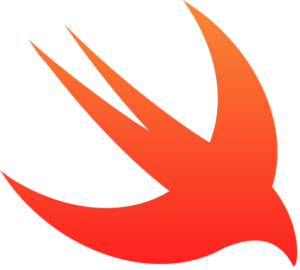
Swift, an Apple-developed programming language, was created as a substitute for C, C++, and Objective-C. Its primary objective was to provide a more user-friendly programming experience compared to the aforementioned languages while also minimizing the potential for errors. The adaptability of Swift enables its utilization in various contexts, including desktop, mobile, and cloud applications. The renowned language learning application Duolingo recently introduced a novel mobile application developed using the Swift programming language.
What old programming languages are still used today?
It is important to note that not all programming languages have indefinite longevity. Whether it is attributable to advancements in technology or merely being supplanted by a more refined linguistic system. Notwithstanding the aforementioned statement, there are certain antiquated programming languages that continue to be employed by IT experts in the present era.
FORTRAN
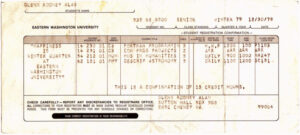
The original iteration of FORTRAN was introduced at IBM by John Backus in the year 1953. The aforementioned compiler, being the initial optimizer compiler, gained significant popularity in the realm of scientific research due to its ability to produce optimized code that demonstrated comparable performance to manually crafted assembly code. The aforementioned language continues to be utilized in contemporary times on a selection of the most advanced supercomputing systems globally. A series of upgrades have been implemented since 1953, culminating in the release of the most recent version in 2018.
COBOL
The computer language known as COBOL was initially established in the year 1959, and it holds the distinction of being one of the earliest high-level programming languages to emerge. Despite its invention many years ago, COBOL continues to maintain significant prevalence in contemporary times. In the United States, a significant proportion of banking systems, namely 43%, are constructed using COBOL programming language. These systems play a crucial role in facilitating financial transactions, accounting for 95% of ATM swipes and 80% of in-person transactions.
Early Microsoft and Apple Programming Languages
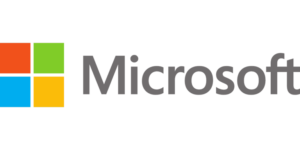
Microsoft and Apple are widely recognized as two of the most pivotal entities in the annals of programming languages. The BASIC programming language, which was initially introduced in 1964, underwent modifications by Bill Gates and Paul Allen, the founders of Microsoft, in 1975. The revised iteration of the software was subsequently released as Altair BASIC, representing Microsoft’s inaugural commercially available and widely disseminated product. This pivotal development ultimately paved the way for the establishment of the corporation.
During the initial period of Apple’s development, Pascal emerged as the preferred programming language. Pascal, which emerged in the early 1970s, garnered favor among Apple engineers because of its notable capabilities and user-friendly nature. Nevertheless, in 1996, Apple’s acquisition of the NeXTSTEP code library resulted in the widespread adoption of Objective-C as the preferred programming language for the prominent technology company.
What is the most popular programming language today?
We are approaching the conclusion of our exploration into the historical development of programming languages. As seen from the aforementioned, computer programming has advanced to a degree that is beyond all initial projections, serving as the driving force behind the technological infrastructure upon which our everyday lives depend. The necessity for proficient experts to execute and regulate the programming languages that drive contemporary society is the underlying rationale.
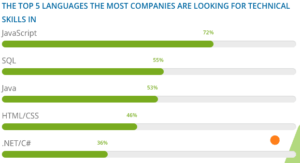
However, it is important to ascertain the programming language that holds the highest level of popularity.
The DevSkiller 2020 IT Skills Report offers significant insights pertaining to the aforementioned query. The paper presents data collected from a comprehensive sample of 213,000 coding examinations that were distributed to individuals in 143 countries. These tests were administered by firms seeking to recruit highly skilled IT employees.
Based on the test invitations that were distributed, it is evident that JavaScript emerged as the most often utilized programming language on the DevSkiller platform. The aforementioned observation is substantiated by the 2020 Stack Overflow Developer Survey, whereby JavaScript is consistently ranked as the most widely adopted programming language for the eighth consecutive year. According to our findings, the top five technologies identified were SQL, Java, HTML/CSS, and .NET/C#.
Conclusion
In the bottom line, we would say that the study of programming languages is an intriguing subject within the field of computer science. It is remarkable to consider that an algorithm devised during the mid-19th century has played a pivotal role in shaping the technologically advanced society in which we presently reside. Programming languages have undergone significant advancements, progressing from primitive machine codes to the more advanced and comprehensible code that drives our modern technologies. It is evident that computer programming will persist in its ongoing development, as it has consistently done over the course of the last 150 years. The anticipation of forthcoming advancements in this field is indeed captivating.
A person can also make a world-class programming language as one’s prominent career, like Python Programming Language, through a genuine training program by a verified training institute, like Craw Security, the parent company of News4Hackers. For more details, give us a call at +91-9513805401 and have a word with our world-class educational counselors.
About The Author:
Yogesh Naager is a content marketer who specializes in the cybersecurity and B2B space. Besides writing for the News4Hackers blog, he’s also written for brands including CollegeDunia, Utsav Fashion, and NASSCOM. Naager entered the field of content in an unusual way. He began his career as an insurance sales executive, where he developed an interest in simplifying difficult concepts. He also combines this interest with a love of narrative, which makes him a good writer in the cybersecurity field. In the bottom line, he frequently writes for Craw Security.
Read More articles Here






